Brighten up with this Rainbow Buddha Bowl. Made with a base of quinoa, filled with vibrantly colored vegetables, and tossed in a Sesame Miso Dressing, this Buddha Bowl makes the perfect light and refreshing meal.
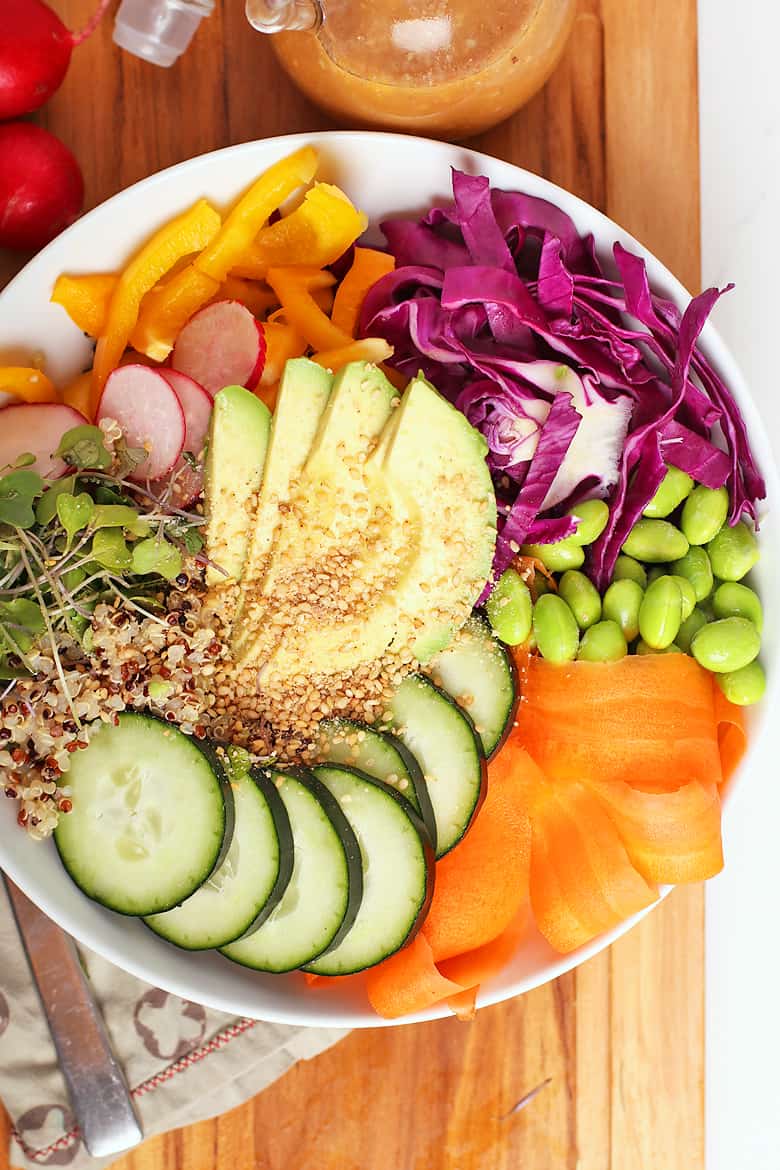
Disclosure: This post may contain affiliate links.
It's day 23 of the 30 Day Cleanse. How's everyone doing? I'll be honest - I've caved a few times over the past 3 weeks but for the most part, I have been enjoying vegetable-packed, whole food meals and I'm feeling great!
I made this recipe during the first week of our January cleanse and I'm pretty excited to share it. This Rainbow Buddha Bowl is
a) Delicious
b) Nourishing
c) So so colorful
This beautiful nourish bowl is filled with Asian inspired flavors for a meal that is full of color, texture, and taste. Since I first made it, I've been eating it at least 2-3 times a week and I think you're going to love it!
Ready to dig in? Let's go!
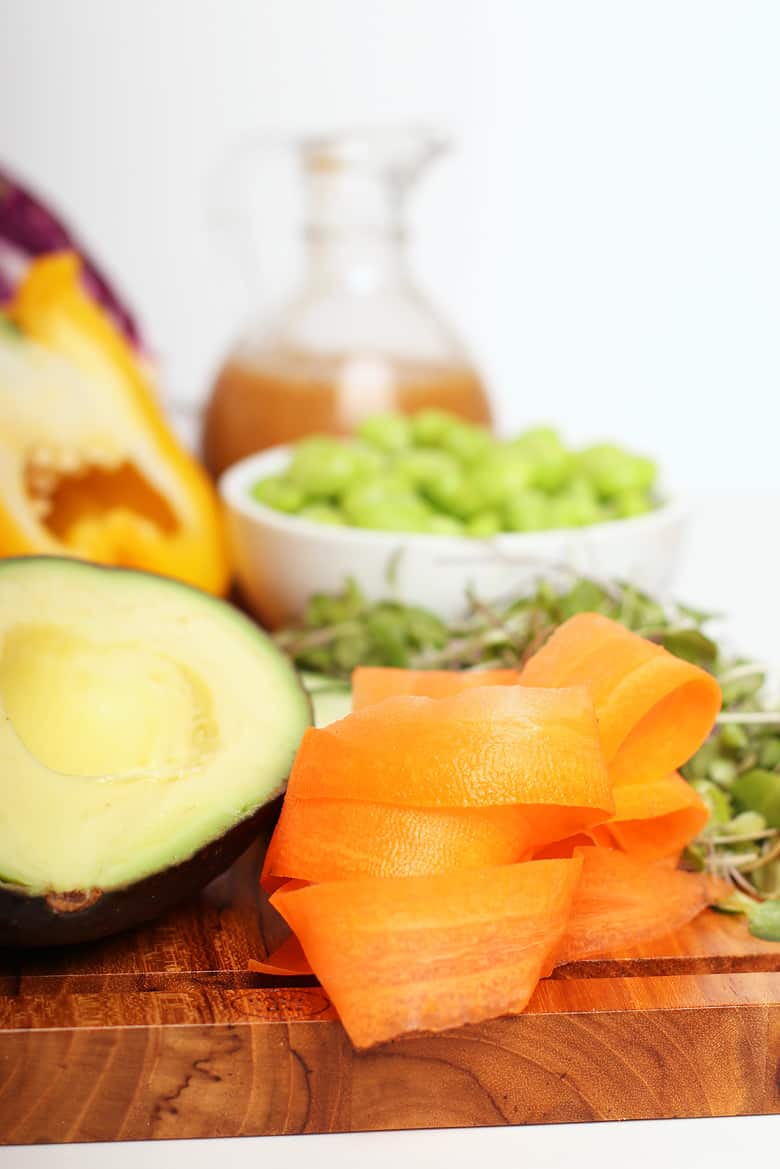
What is a Buddha Bowl?
But let’s back up a minute. First of all, some of you may be asking, “What is a Buddha Bowl?”.
A Buddha Bowl, or Nourish Bowl, is a one-bowl meal filled to the brim with vibrant colors, wholesome vegetables, and plant-based proteins.
The idea behind this recipe is one of balance. The meal combines healthful foods that vary in flavor, texture, and health benefits to reflects the balance sought after in Buddhism. The term has been adopted and adapted so that it now strays from its origins. You can now find recipes that contain animal proteins such as lean meats or boiled eggs. Sadly, we can no longer assume that all Buddha Bowls offer a one-bowl vegan meal.
Of course, this beautiful bowl filled with rainbow vegetables is 100% vegan, gluten-free, and refined sugar-free!
Recommended Ingredients & Equipment
This beautiful bowl is filled with sweet potatoes, chickpeas, cabbage slaw, and more. It is 100% vegan and gluten-free for a hearty meal that I think you’re going to love.
Ingredients & Substitutions
- Quinoa – Most buddha bowls start with a base of healthy grains. My go-to choice is quinoa but you can also use brown rice, couscous, rice noodles, orzo, or cauliflower rice.
- Vegetables - I like to use a combination of fresh crunchy vegetables such as cucumbers, radishes, carrots, avocado, bell pepper, edamame, microgreens, and red cabbage. These vegetables are highly versatile and can be easily swapped out for your favorite raw veggies of choice.
- Sesame Oil - I prefer toasted sesame oil as it has more flavor.
- Miso - Either white or yellow miso paste is fine.
- Soy Sauce - Use Tamari for a gluten-free Buddha bowl.
- Maple Syrup - This is the sweetener in the dressing. Feel free to swap it out with agave nectar or coconut sugar. You can also omit it altogether.
- Apple Cider Vinegar
- Sesame Seeds
- Fresh Ginger
- Lime
Recommended Equipment
For this recipe, you will need basic cooking equipment including a saucepot and kitchen utensils including a chef's knife and zester. You will also need a salad dressing shaker. (<<affiliate links)
Check out the full list of my recommended kitchen tools and gadgets.
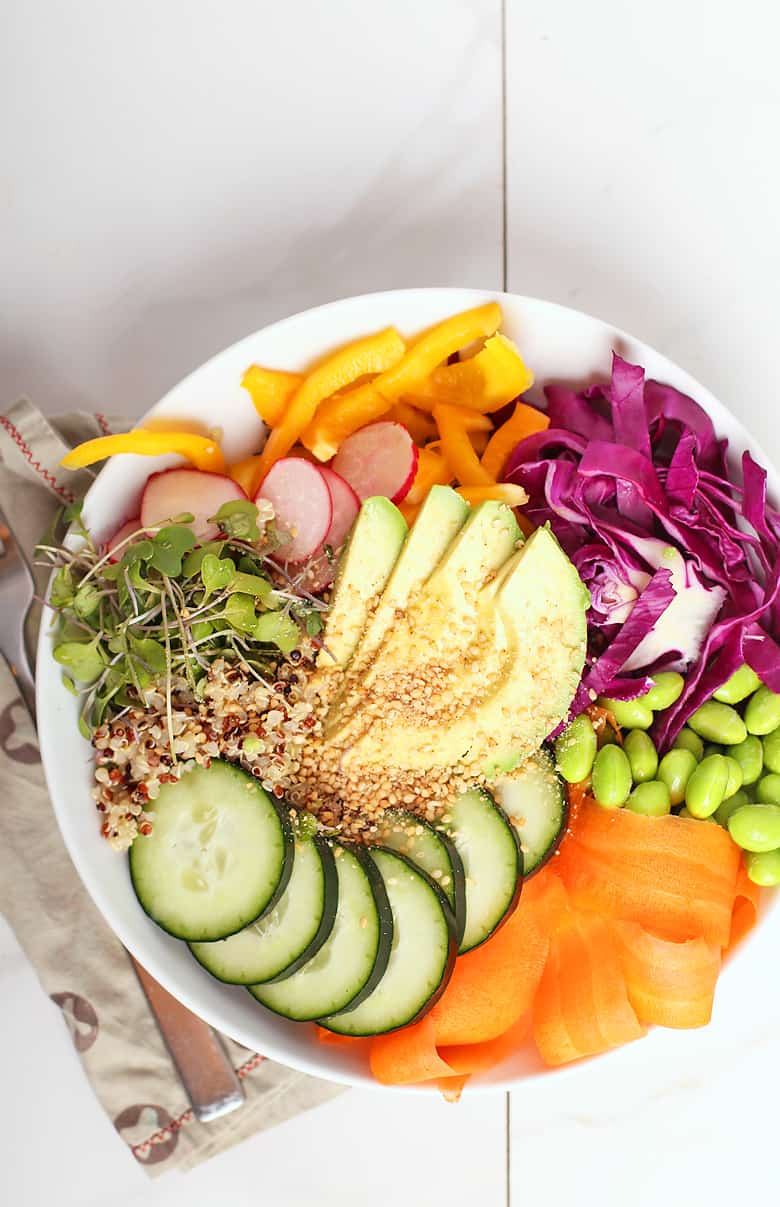
How to make a Buddha Bowl
Step One – Cook the Quinoa
Cooking quinoa is very similar to cooking rice. To begin, quinoa should always be first rinsed in a fine-mesh sieve until water runs clear. This is key for getting a clean, nutty flavor. Otherwise, quinoa can sometimes taste dirty and gritty.
Once it’s rinsed, drain the water and transfer it to a saucepot. Add 2 parts water for every 1 part quinoa and bring to a boil. Cover, reduce heat to a simmer and cook until the water is completely absorbed about 20 minutes.
Remove from heat and let it sit an additional 5 minutes before uncovering and fluffing with a fork.
Step Three – Make the Dressing
In a small bowl or salad dressing shaker combine all the ingredients for the dressing and shake vigorously until well combined. Place in the refrigerator until ready to use.
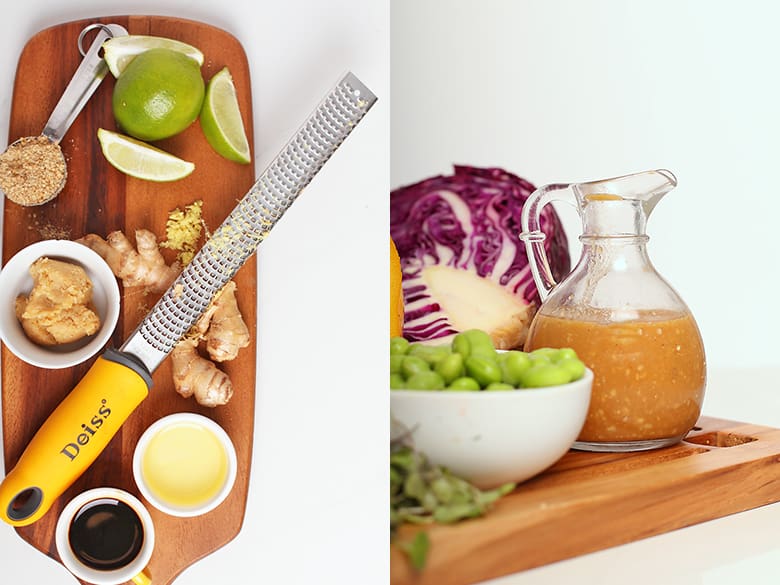
Step Three - Assemble the Bowls
Peel, chop, and prepare your vegetables.
When quinoa is ready, divide between 4 bowls. Equally divide the vegetables between the bowls. Top with Sesame Miso dressing and serve immediately.
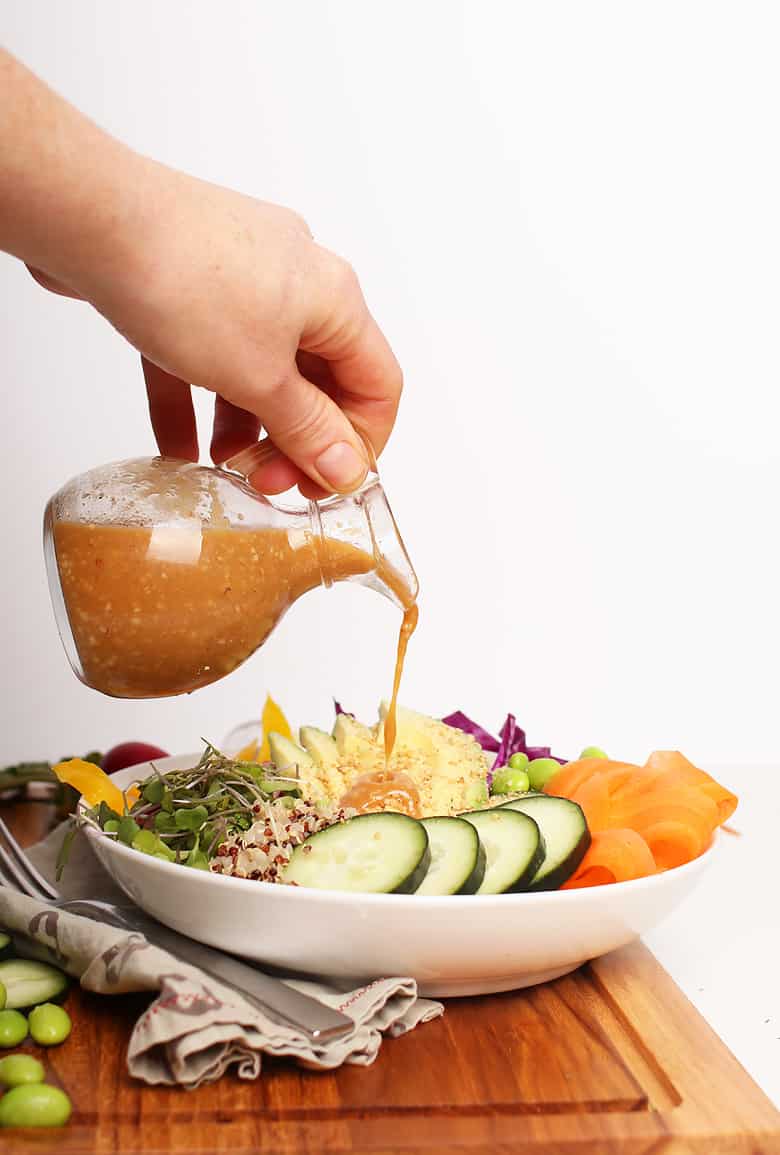
Serving And Storing
Serving – Once assembled, these bowls should be served immediately. Serve it with your choice of sauce and your favorite nuts or seeds (optional).
Storing – Leftovers should be stored separately. The sesame miso dressing can be stored in airtight containers in the refrigerator for up to 4 days. The vegetables and quinoa can be stored for 3 days.
Make in Advance – For quick, grab and go lunches, make the components of this bowl separately. When ready to eat, quickly assemble what you need and pack it for lunch.
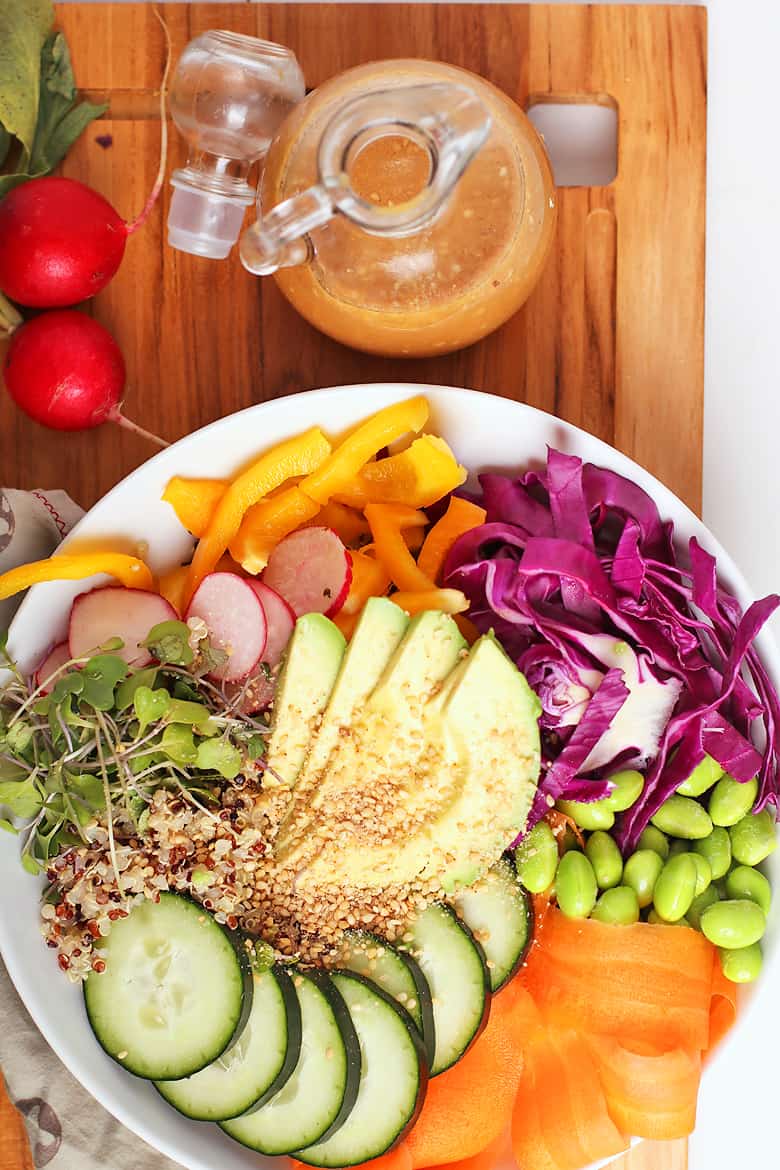
More Buddha Bowl Recipes
- Green Goddess Buddha Bowl
- Vegan Satay with Red Curry Sauce Buddha Bowl
- Roasted Brussels Sprouts Buddha Bowl
- Roasted Cauliflower Quinoa Bowl
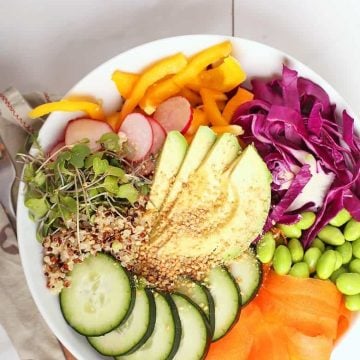
Rainbow Buddha Bowl with Sesame Miso Dressing
Ingredients
Rainbow Buddha Bowl
- 1 cup quinoa, uncooked
- 1 small cucumber, thinly sliced
- 4 radishes, thinly sliced
- 1 small avocado, sliced or cubed
- 1 large carrot, peeled
- ½ cup edamame, shelled and thawed
- ½ yellow bell pepper, thinly sliced
- 1 cup loosely packed microgreens
- 1 cup loosely packed red cabbage, chopped
Sesame Miso Dressing
- 3 tbsp. toasted sesame oil
- 2 tbsp. white miso
- 2 tbsp. water
- 1 tbsp. soy sauce
- 1 tablespoon maple syrup
- 1 tablespoon apple cider vinegar
- 1 tbsp. sesame seeds
- 1" fresh ginger, grated
- juice of one lime
Instructions
- Make the quinoa according to package instructions. While the quinoa cooks, prepare the Sesame Miso dressing
- In a small bowl or salad dressing shaker combine all the ingredients for the dressing and shake vigorously until well combined. Place in the refrigerator until ready to use.
- Chop and prepare your vegetables.
- When quinoa is ready, divide between 4 bowls. Equally divide the vegetables between the bowls. Top with Sesame Miso dressing and serve immediately.
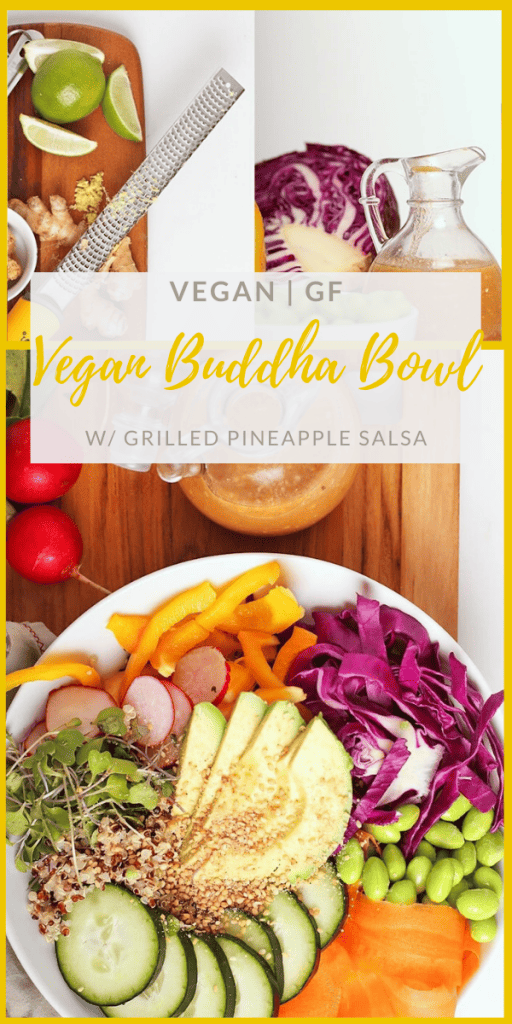
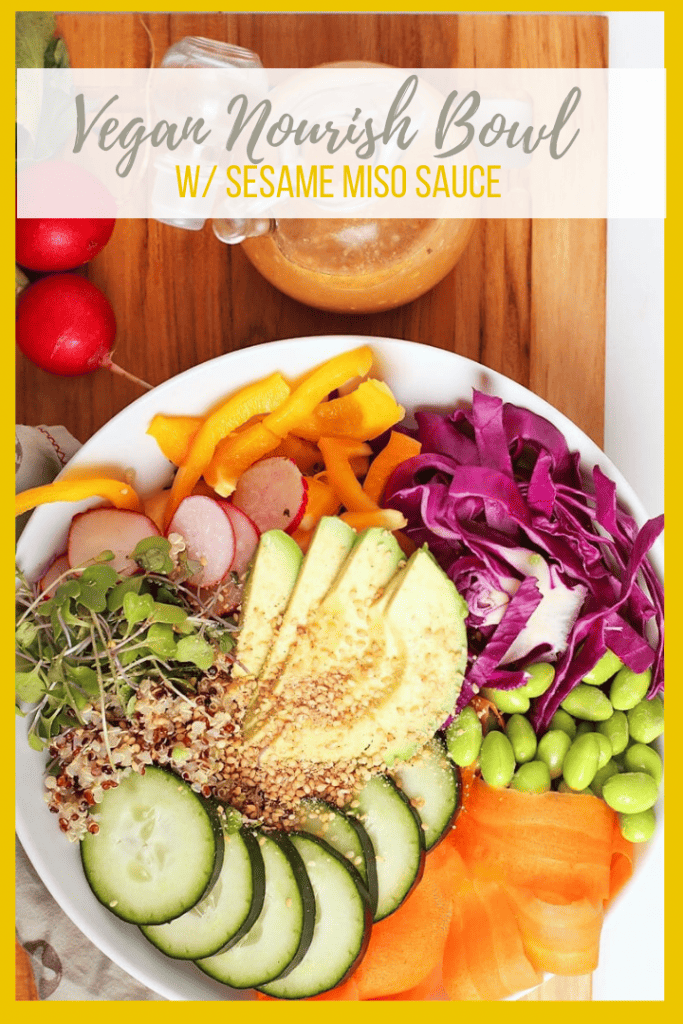
 Hi, I’m Sarah. I’m a 14-year (and counting) vegan, professionally trained photographer, former pastry chef, founder of My Darling Vegan, and author of the
Hi, I’m Sarah. I’m a 14-year (and counting) vegan, professionally trained photographer, former pastry chef, founder of My Darling Vegan, and author of the
Lillith says
This was really good, I’ve made it several times and the family quite enjoys it. I usually add some thinly sliced tofu (Hawaiian style if I can find it) marinated in Bragg Amino Acids as well.
Vee says
Hi what exactly are micro greens?
Sarah says
They are a type of green that is harvested shortly after they sprout (which is why they are small and nutrient-packed). You could also do any kind of greens, sprouts, or watercress if you can't find microgreens.